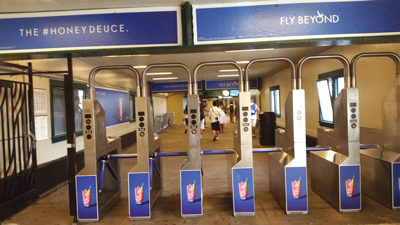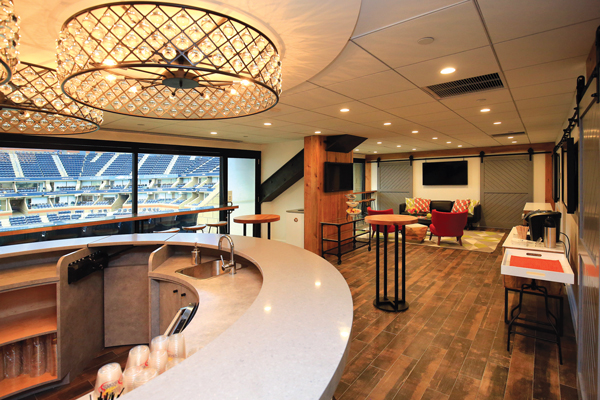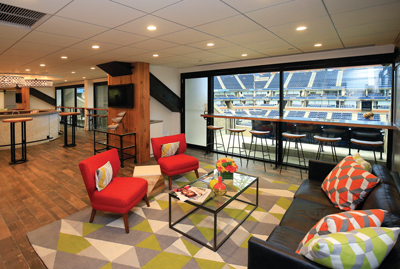Grey Goose has long been a midtier sponsor at the U.S. Open, below heavyweights like JPMorgan Chase, American Express and Heineken. But the vodka maker, which is owned by Bacardi and makes what is called the signature drink of the U.S. Open, the Honey Deuce, is seriously stepping up its branding around the Open.
In the process, it eliminated one of the longest-running ambush marketing campaigns in sports. For years, Stella Artois advertised in the No. 7 subway station and Long Island Rail Road station at the Open, where a majority of the 700,000 plus who stream through the event arrive. Now it’s all Grey Goose branding, including on turnstiles.
“Grey Goose is our official partner. They have been very aggressive in marketing the association this year, especially with [outside-of-home] media, which we encourage and certainly appreciate,” said Lew Sherr, chief revenue officer of the U.S. Tennis Association, which owns and operates the Open. “They also have an amazing installation at the entry to Penn Station,” where the LIRR departs from in Manhattan.
 |
Grey Goose branded the subway station where many arrive for the Open, replacing ambush marketer Stella Artois.
Photo by: DANIEL KAPLAN / STAFF
|
So did the USTA ask Grey Goose to usurp the tennis-themed ads from Stella, which ambushed Heineken’s sponsorship?
“They secured the platform positions on their own,” Sherr said.
Grey Goose has also been active in digital media. Read a New York Times tennis story this week, and chances are a Grey Goose ad is inserted.
But not all ambush marketing is gone. Uniqlo has a large canvas ad draped across a depot that fans walk by from the 7 station to the Open. Polo is the official Open apparel sponsor. Uniqlo, a Japanese apparel brand, sponsors Novak Djokovic, who is in the ad.
■ DEALS ON THE WAY: The International Tennis Federation, which operates the Davis Cup and Fed Cup and oversees the sport’s drug policies, lost $1.4 million in 2015 on revenue of $52 million because of what the group ascribed to unsold sponsorships in its annual report. David Haggerty, the American who took over as president of the group last year, said new sponsorships are on the way.
Revenue should rise 4 percent this year and 12 percent next year. Some of that is also attributable to a new global TV deal with beIN Sports.
But Haggerty’s big money push is to create a final four-type format for the Cups. He ran for the post on that platform, and hopes to have a package to vote on by the ITF’s next annual meeting in August 2017.
The earliest that the new format could come into play is 2018.
Haggerty envisions a neutral site for the finals, or final four. Asked whether a neutral site could drain the event of its nationalistic passions, he pointed to the Champions League, which has a neutral site final.
 |
The Center Court Club is a new space sponsored by American Express, created from combining four suites.
Photos: COURTESY OF USTA
|
■ LOBS AND VOLLEYS: American Express is sponsoring a new club that is strung together by combining four suites. Dubbed the Center Court Club, it can hold up to 70 people. Unlike other suites, which hold 16 to 20 and must be bought for the whole event, buyers need only buy a handful of tickets for eight sessions at a time (there are 24 sessions total). The converted suite is now the largest in Arthur Ashe Stadium outside the President Box Suite. … The USTA hopes to have instant replay on every court by 2018, when the renovations of the grounds are complete. Only one tournament in the world has that now, the BNP Paribas Open in Indian Wells, Calif. But National Tennis Center Chief Operating Officer Danny Zausner said he is committed to making it happen. Only five of 17 competition courts are equipped with instant replay, but they are all now wired for it after the recent renovations.







